
Based on the theory of constraints, as long as constraining equipment on your line output at peak capacity and efficiency, any interruption up and / or down the line does not have that much impact on your entire process. Only when this equipment is down is there an interruption in production and an impact on its result.
In the wood transformation industry, more specifically, constraints can be different according to the type of production. For example, in the case of a 2"×3" production on the planer line, the constraint is usually the stacker. On the other hand, in the case of a 2"×8" production, the constraint is the planer itself.
With PMP SOLUTIONS downtime tools, there's no need to monitor every piece of equipment on the line. Our process-centric approach allows you to focus on the contraints, without losing any information about the equipment responsible for the downtime, which reduces documentation efforts and makes analysis that much easier.
By comparing the process-centric downtime information with your production information, you can easily prioritize preventive maintenance and optimize its impacts on your mill—with the added bonus that you can perform this analysis all inside PMP TeamMate.
Because overall equipment effectiveness (OEE) informs you about the overall health of your manufacturing process, so your output, including the lumber recovery factor and PMP TeamMate uses it to communicate information. It takes into account every possible loss (time, speed, matter) and compares it to the maximum attainable potential of the manufacturing process, which is constant.
OEE = Availability × Performance × Quality
OEE considers three factors: the availability and performance of your equipment, and the quality of its output.
An OEE score of 100 % means that the equipment is operating at full capacity with no downtime, producing good quality products at maximum speed. OEE is a better indicator of the performance of a process (e.g., sawing, planing) than equipment efficiency (although it’s important, too, for different reasons).
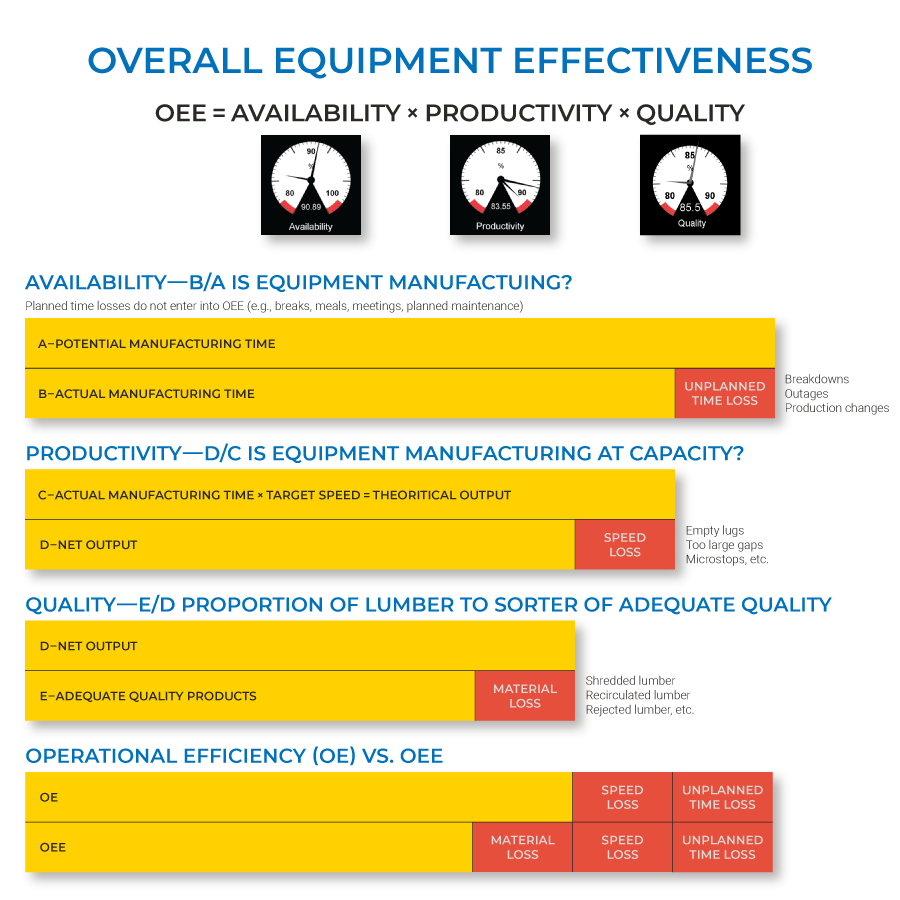
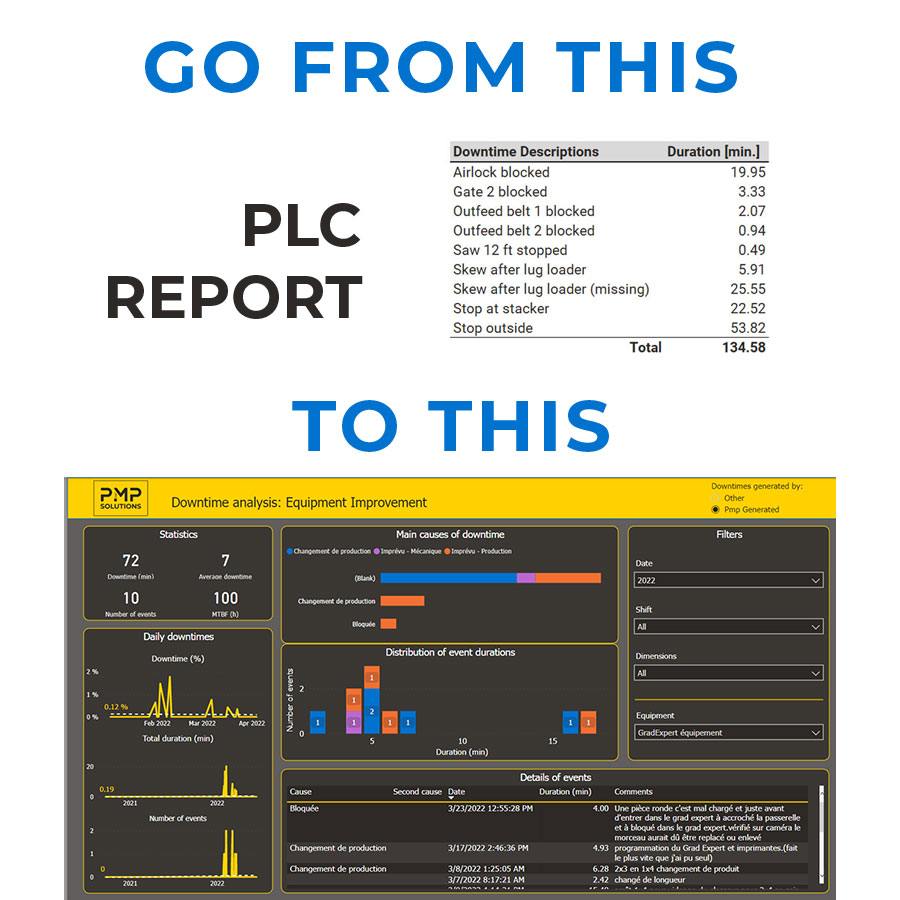
AUTOMATIC DOWNTIME LOGGING
Many solutions available on the market rely on external sensors that must be manually installed on the production line. Unlike them, PMP TeamMate captures its data at the most reliable of all sources: the equipment. It also doesn't require any additional equipment.
UNRIVALED PRECISION
Common automatic downtime logging systems too often report undetailed causes that you can't act on. This usually leads to complex additional programming and endless maintenance. With PMP TeamMate, operators can document downtimes in unparalleled detail, which enables a very clear picture of incidents and actionable reports.
DIG DEEP WITH POWERFUL BUSINESS INTELLIGENCE DASHBOARDS
Once you have data about your downtimes, you can use PMP TeamMate business intelligence (BI) dashboards to deep dive into downtimes and uncover trends and areas of improvement—all this backed by our 15+ years of experience ensuring the quality of your downtime information.
In all our years in business, we’ve observed that mills who correctly document and manage downtimes perform better by opening effective vertical communication channels that stimulate proactivity and reduce knee-jerk reactions.
Documenting downtimes in PMP TeamMate shines a spotlight on the know-how and skills of the people who know your equipment best—your employees.
Our more than 15 years in the industry has taught us that operators want equipment and production to run smoothly. That's why we've developed a downtime management tool that's simple, fast, efficient, and designed to encourage operators to document downtimes as precisely as possible. PMP TeamMate also normalizes your downtime data, making its analysis that much simpler.

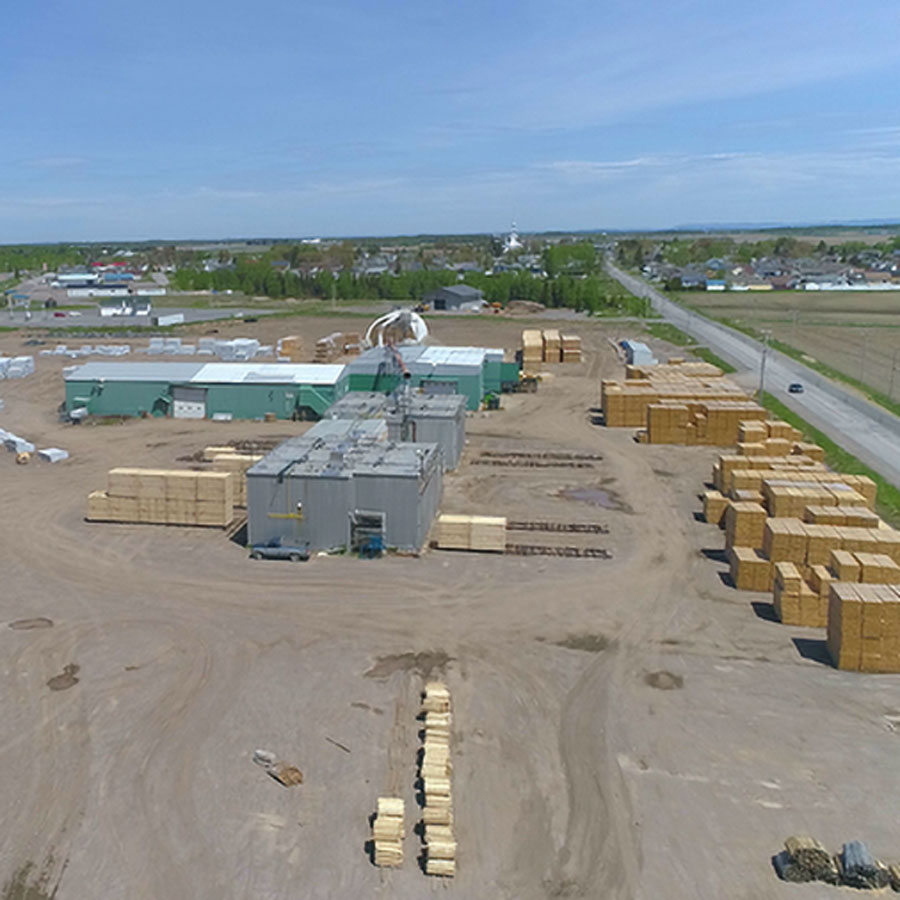
Thanks to PMP TeamMate, Bois Lac-St-Jean, the mill in Hebertville, managed to improve the availability of its equipment by about 45 % by shift, which means they were able to manufacture 15–20 thousand FBM more daily. That's like having half a day more to manufacture a week.
In all our years in business, we've helped over a hundred mills—with and without IT teams—to deploy PMP TeamMate. As a result, PMP TeamMate was designed to be deployed entirely remotely and without disrupting your operations. All we need is access to your databases and PMP TeamMate is up and running in next to no time.
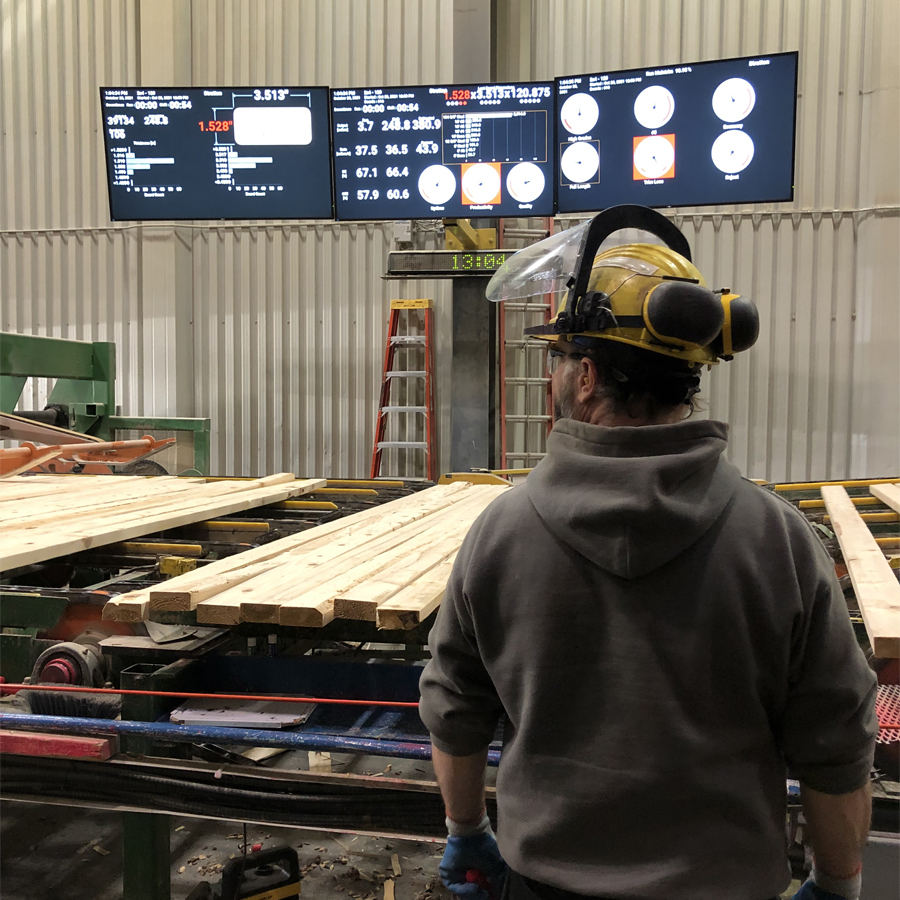
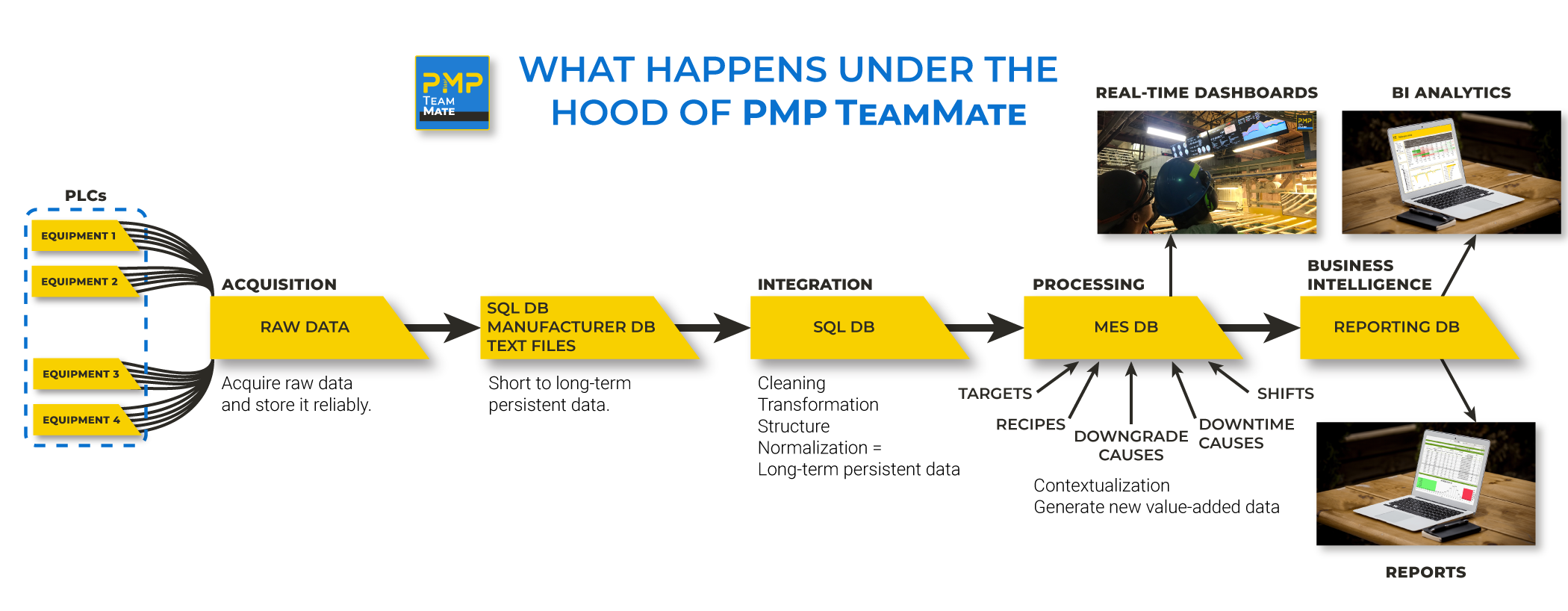
GARBAGE IN, GARBAGE OUT
The quality of your data sources is crucial for business intelligence (BI) applications and artificial intelligence (AI) systems because it directly impacts the accuracy, reliability, and effectiveness of the insights BI / AI generate.
In BI applications, the quality of your data determines the success of the analytical process because they rely on this data to generate reports, dashboards, and visualizations that offer insights into the performance of your mill. If your data is incomplete, inconsistent, or inaccurate, the insights generated by BI software will be misleading, resulting in bad decisions and missed opportunities.
Similarly, for AI systems, data is the foundation for models. AI systems use machine learning algorithms to identify patterns and make predictions based on historical data. Again, if your data is incomplete, inconsistent, or inaccurate, your AI system will learn incorrect patterns and make inaccurate predictions, which can have significant consequences.
Therefore, it is essential to ensure that the data source used for BI applications and AI systems is reliable, accurate, complete, and representative of the problem being solved. Organizations need to invest in data quality and data governance practices to ensure that the data source is fit for purpose and can support the insights generated by these applications.